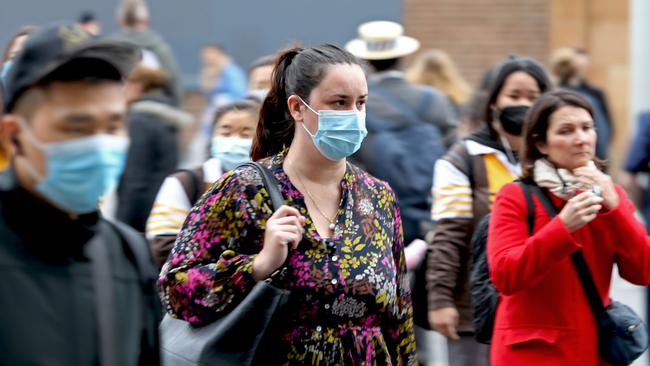University of Sydney study shows low humidity causes coronavirus spread
A second study has found that dry air associated with low humidity could cause coronavirus to spread quicker.
NewsWire
Don't miss out on the headlines from NewsWire. Followed categories will be added to My News.
Dry air could cause coronavirus to spread quicker, a new study has found.
The research, published on Tuesday in Transboundary and Emerging Diseases, found an association between low humidity and an increase in community transmission in the Greater Sydney area during the early stages of the pandemic.
The study examined 1203 locally acquired infections in NSW until the end of May and estimated that for every 1 per cent drop in relative humidity, coronavirus cases increased by between 7 and 8 per cent.
The cases where a postcode of residence was reported were included in the study and analysed against weather data from the nearest observation station.
Low humidity can be defined as dry air. The weather bureau reports relative humidity increases in coastal regions and northern Australia due to the wetter climate in the region.
Research lead Professor Michael Ward, an epidemiologist in the school of veterinary science at the University of Sydney, said there was a growing body of evidence that humidity was a key factor in the spread of coronavirus.

“Dry air appears to favour the spread of COVID-19, meaning time and place become important,” he said.
“Accumulating evidence shows that climate is a factor in COVID-19 spread, raising the prospect of seasonal disease outbreaks.”
Prof Ward said humidity mattered because when it was low and the air dry, it made the aerosols smaller.
“When you sneeze and cough, those smaller infectious aerosols can stay suspended in the air for longer. That increases the exposure for other people. When the air is humid and the aerosols are larger and heavier, they fall and hit surfaces quicker,” he said.
It’s the second peer-reviewed study by the same authors that confirms the link between low humidity and an increased risk of coronavirus transmission.
The first study was published in June and analysed 749 locally acquired infections in Greater Sydney between February 26 and March 31.
But the studies were not without their limitations – they looked at residential addresses where people didn’t necessarily catch the virus and outside humidity not inside where most transmission occurs.
“Measuring the indoors environment is not possible when retrospectively analysing hundreds of disease cases that have occurred in an epidemic across an entire country or state,” the paper said.
It also reported controlled studies of the relationship between COVID-19 cases and factors such as relative humidity was “challenging”.
But it is not the first research to identify a link with a recent study on the COVID-19 outbreak in China finding an association between transmission and daily temperature and relative humidity.
A link between climate and occurrence was also found in SARS cases in Hong Kong and China and MERS cases in Saudi Arabia.
Originally published as University of Sydney study shows low humidity causes coronavirus spread
